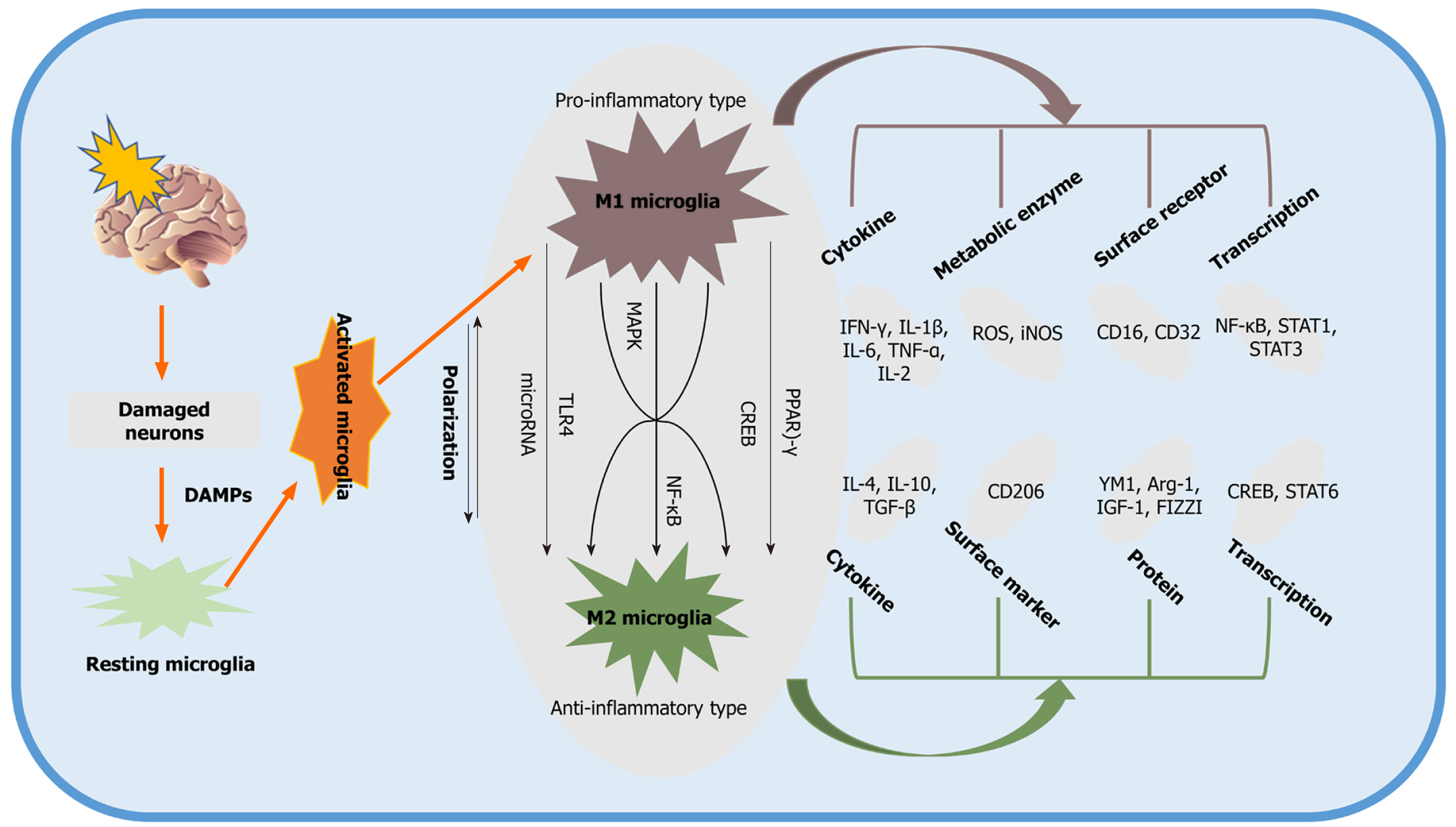Copyright
©The Author(s) 2021.
World J Stem Cells. Aug 26, 2021; 13(8): 1030-1048
Published online Aug 26, 2021. doi: 10.4252/wjsc.v13.i8.1030
Published online Aug 26, 2021. doi: 10.4252/wjsc.v13.i8.1030
Figure 1 Signaling pathways describing the process of polarization of the M2 phenotype.
Damaged neurons induced by ischemic stroke activate resting microglia by producing damage-associated molecular pattern molecules. M1 phenotype microglia participate in the proinflammatory tissue response, whereas M2 microglia produce antiinflammatory substances. DAMPs: Damage-associated molecular pattern molecules; PPAR: Peroxisome proliferator-activated receptor; CREB: c-AMP response element binding protein; NF-κB: Nuclear factor-κB; YM1: Chitinase-3 Like protein; CD: Cluster of differentiation; STAT: Signal transducer and activator of transcription; ROS: Reactive oxygen species; Arg-1: Arginase-1; TNF: Tumor necrosis factor; iNOS: Inducible nitric oxide synthase; TLR: Toll-like receptor; IGF-1: Insulin-like growth factor-1; IL: Interleukin; IFN: Interferon; FIZZI: Found in inflammatory zone 1; TGF: Transforming growth factors; MAPK: Mitogen-activated protein kinase.
Figure 2 An overview as to how mesenchymal stem cells promote neurogenesis and neurological recovery.
Mesenchymal stem cells (MSCs) are isolated and identified from various tissue sources. These MSCs produce different angiogenic and neurotrophic factors by paracrine mechanisms in order to act on astrocytes, microglia, oligodendrocytes, and angiogenesis, promoting neurological recovery and neurogenesis. IGF-1: Insulin-like growth factor 1; BDNF: Brain-derived neurotrophic factors; VEGF: Vascular endothelial growth factors; HGF: Hepatocyte growth factor; NAP-2: Neutrophil activating protein 2; PDGF: Platelet-derived growth factor; Ang-1: Angiopoietin-1; MSC: Mesenchymal stem cell.
- Citation: Xin WQ, Wei W, Pan YL, Cui BL, Yang XY, Bähr M, Doeppner TR. Modulating poststroke inflammatory mechanisms: Novel aspects of mesenchymal stem cells, extracellular vesicles and microglia. World J Stem Cells 2021; 13(8): 1030-1048
- URL: https://www.wjgnet.com/1948-0210/full/v13/i8/1030.htm
- DOI: https://dx.doi.org/10.4252/wjsc.v13.i8.1030










